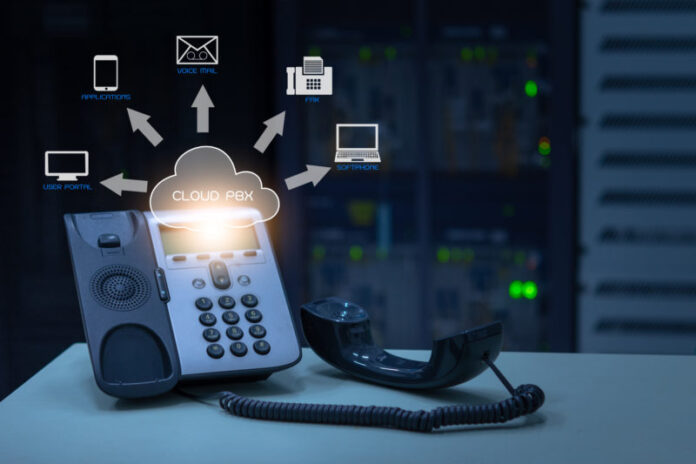
Cheaper monthly bills and more advanced features are appealing, but some businesses still hesitate to follow through.
They think the hardware costs are too expensive, or that getting everything set up is going to be a time-consuming and challenging process.
But if you prepare and choose the right provider, your transition to a cloud phone system can be seamless.
We’ll show you exactly how to set up VoIP phone for your business, lower upfront costs, and get the most out of your new VoIP phone system.
How Is a VoIP Phone System Different?
Before we jump into the details, we need to establish what sets Voice over Internet Protocol (VoIP) phone apart from an analog phone.
An analog telephone connects directly with the Public Switched Telephone Network (PSTN) through dedicated landlines. Phone calls are facilitated by the local telephone company, effectively require a direct connection to a phone jack.
IP phones connect to the telephone network via a VoIP provider through the internet. It turns the audio into data packets and transmits them using the Internet Protocol (IP). The provider’s data center then transforms the signals into analog and transfers them through to the PSTN.
Since SIP phones don’t need dedicated landlines, it’s easier to scale an office with VoIP. With a traditional phone system, to share phone service with multiple employees, an on-premises Private Branch Exchange (PBX) is required.
1) Test Your Network and Internet Connection
You might be concerned about how much bandwidth VoIP uses, but a rule of thumb is about 100 kbps upload and download per line.
Most internet service providers now offer gigabit speeds with their business plans. So your current connection is more than likely fast enough for a VoIP phone system. One caveat is that some home connections have much slower upload speeds, such as some DSL connections.
2) Invest In The Right VoIP Hardware
If you already have a VoIP provider, the next step of your VoIP setup is to invest in VoIP hardware. Since VoIP has become standard for businesses over the last few years, there are a lot of cutting-edge options. Watch the video below for a quick breakdown of the types of equipment you’ll need to get your VoIP system up and running.
3) Find a VoIP Provider with the Right Features
Switching to VoIP doesn’t just mean you can replace your landline. It’s also an opportunity to move your business communications into the 21st century, at no extra cost.
In late 2019, we surveyed over 1,000 professionals about business communication and used the insights to create the 2020 State of Business Communication Report. One of the key insights was that more than one in three companies had lost customers due to internal communication errors.
The right VoIP provider will help you overcome such issues. Your company will get the features you need to eliminate silos and create efficient, cross-department communications.
4) How To Get a Business Phone Number
Depending on your VoIP provider, a local phone number could be included with any VoIP plan that you choose. This is the case with Nextiva.
You have a few ways to get a phone number for your business. If you have one already, you would port it over. Otherwise, you can select a local number that’s available or choose a toll-free number.
5) Set Up Your VoIP Phone System
Once you have a provider and hardware, it’s time to complete the setup in your office. The specific steps depend on hardware and the number of employees.
We only sell phones and handsets that are ready to plug-and-play. So below, we outline the simple process of getting your VoIP up and running with us. If you use other providers or purchase phones from a third-party, the process may require additional steps.
How to Set Up VoIP Desk Phones and Handsets
The necessary steps depend on the model that you’ve bought and your network setup. With a standard network switch in place, the setup process is simple. If you have Power over Ethernet (PoE), the electrical signal is carried in one wire — saving you from needing an AC adapter.
VoIP desk phones or handsets without PoE:
- Plug the AC adapter into the outlet, then plug it into the phone or handset base.
- Connect the IP phone to the switch or router using a CAT5e or CAT6 cable.
- Wait for the phone to initialize, then check for dial tone.
If you have a router that supports Power over Ethernet (PoE), the process is slightly different but is even quicker.
VoIP desk phones to PoE-enabled routers:
- Connect the phones with the PoE-enabled switch or router with Ethernet cables. Stay within the recommended max length for twisted pair cables of 328 feet.
- Once connected, the phone should turn on. It should automatically establish a connection to your VoIP provider.










